Physical Address
304 North Cardinal St.
Dorchester Center, MA 02124
Physical Address
304 North Cardinal St.
Dorchester Center, MA 02124
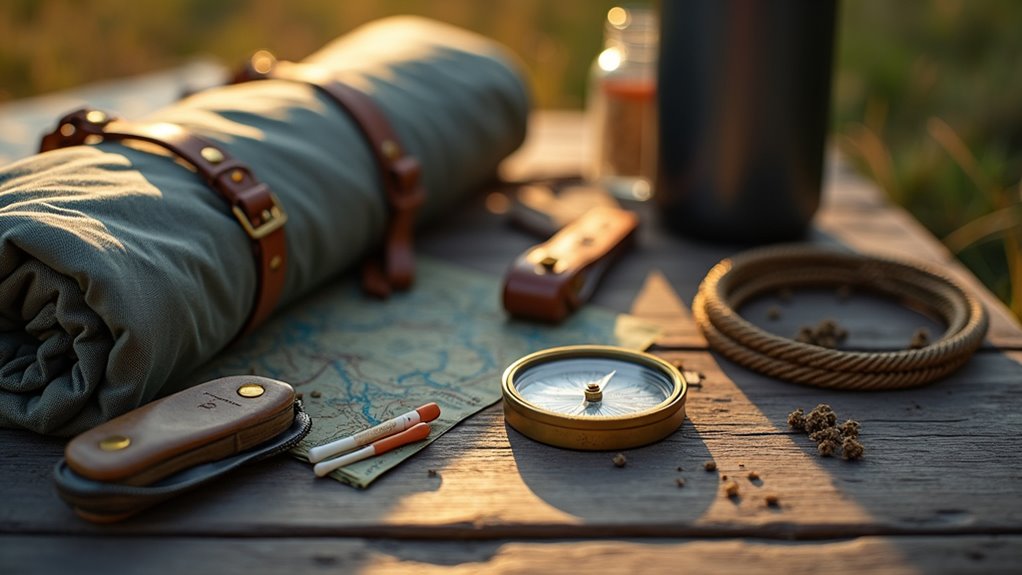
Don't let poor planning turn your dream camping trip into a nightmare—discover the nine critical preparation steps that separate epic adventures from disasters.
You’ve probably heard a thousand camping horror stories about forgotten essentials, but here’s the truth: most disasters happen before you even leave your driveway. Proper preparation isn’t just helpful—it’s what separates memorable adventures from miserable ordeals. You’ll need to master nine critical preparation areas, from researching your destination to conducting final equipment checks. Skip even one of these steps, and you’re gambling with your safety, comfort, and the success of your entire trip.

Before you pack a single item or reserve a campsite, you’ll want to dig deep into researching your chosen destination. Start by checking weather patterns for your travel dates, including temperature ranges and precipitation forecasts.
Thorough destination research before packing or booking prevents costly mistakes and ensures you’re prepared for whatever conditions await.
Study topographical maps to understand terrain difficulty and identify water sources, trails, and emergency exits.
Research local wildlife activity – you’ll need different precautions for bear country versus snake-prone areas.
Check fire restrictions, permit requirements, and seasonal closures that could impact your plans.
Read recent trip reports from other campers to learn about current trail conditions, water availability, and potential hazards.
Contact local ranger stations for insider knowledge about your specific camping area.
Consider what camping style best matches your destination’s terrain, available amenities, and your experience level.
This groundwork prevents unpleasant surprises and guarantees you’re properly equipped.
While general weather research gives you a foundation, you’ll need to dive deeper into specific forecasts and seasonal patterns that could make or break your camping trip.
Check multiple weather sources starting seven days before departure, then monitor daily updates. Mountain and coastal areas experience rapid weather changes that standard forecasts often miss. Don’t rely on your phone’s default weather app—use specialized services like Weather Underground or NOAA for detailed hourly predictions.
Consider these critical seasonal factors:
Once you’ve assessed the weather conditions, start planning family camping activities that work well in your expected climate to keep everyone engaged regardless of what Mother Nature brings.
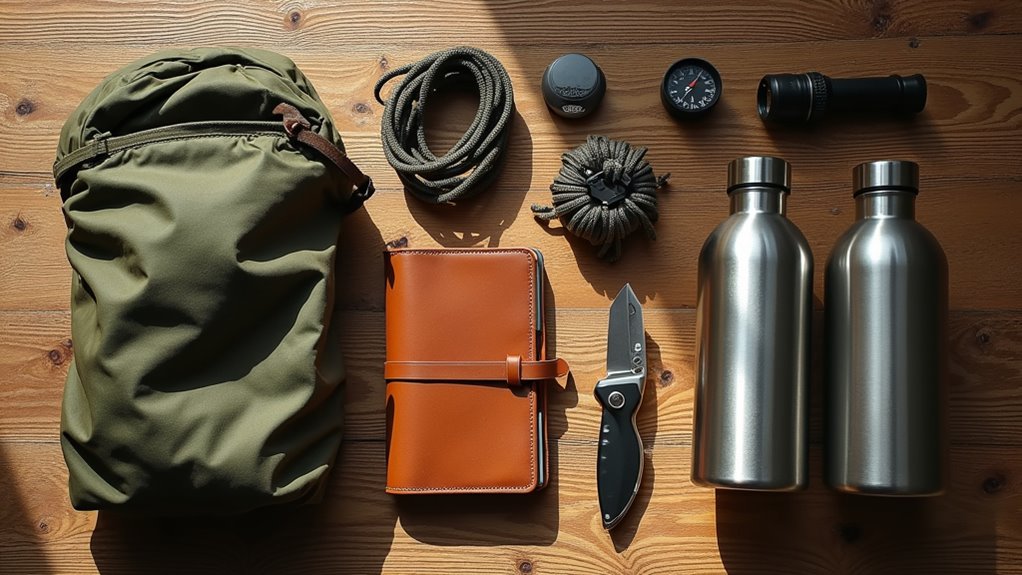
Once you’ve pinpointed your expected conditions, translate that weather intelligence into a targeted gear list that’ll keep you comfortable and safe. Start with shelter essentials: tent, sleeping bag rated for expected lows, and sleeping pad. Add clothing layers—base layers, insulating mid-layers, and waterproof outer shells.
Don’t forget cooking gear: stove, fuel, cookware, and food storage containers.
Create separate categories for safety items (first aid kit, headlamp, navigation tools), personal hygiene supplies, and camp comfort items. Review each item’s necessity against your specific trip conditions.
Cross-check your list against camping apps or online checklists to catch overlooked essentials. Pack everything out on your floor before departure, ensuring nothing’s forgotten and everything fits properly in your pack.
If camping in regions with wildlife like the Himalayas, include wild animal safety gear such as bear canisters, noise makers, and proper food storage systems to prevent dangerous encounters.
After finalizing your gear checklist, you’ll want to put every piece of equipment through its paces at home rather than discovering problems in the wilderness. Testing equipment beforehand prevents frustrating surprises and potentially dangerous situations when you’re miles from help.
Set up your tent completely, checking for missing stakes, broken zippers, or torn fabric. Fire up your camp stove and lantern to ensure they’re working properly and you’ve got adequate fuel. Test your water filter, sleeping bag zippers, and any electronic devices.
Here’s your equipment testing priority list:
When planning for summer adventures, pay special attention to testing your cooling gear and ventilation systems to ensure they’ll keep you comfortable in extreme temperatures.
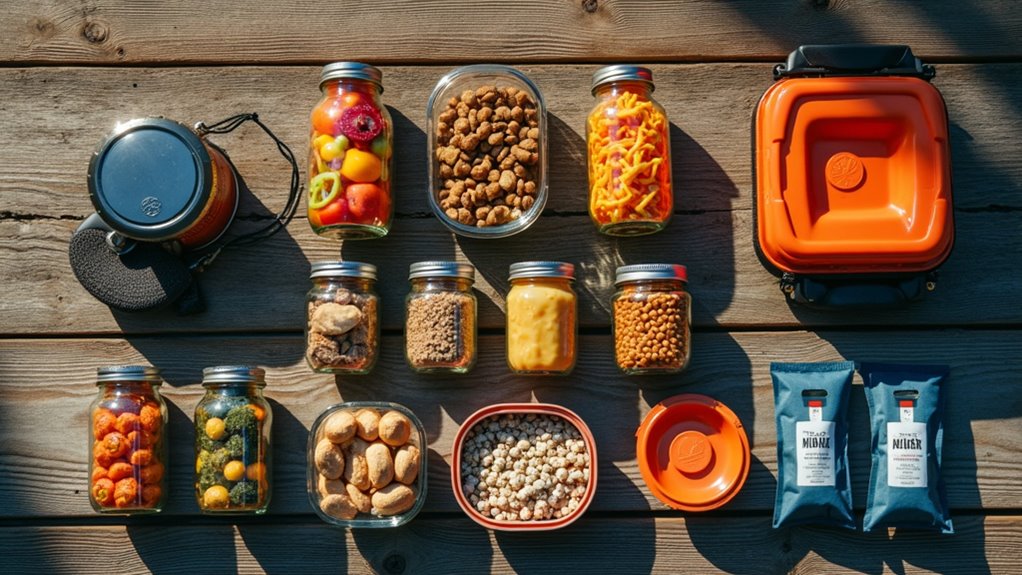
What’s the point of having perfectly tested gear if you’re stuck eating stale granola bars for three days straight? Map out every meal before you leave home. Create a detailed menu that includes breakfast, lunch, dinner, and snacks for each day.
Calculate portions based on your group size and activity level – hiking burns more calories than car camping.
Choose foods that won’t spoil quickly and pack well. Pasta, rice, canned goods, and dried fruits travel beautifully. Pre-cut vegetables and marinate meats at home, then store them in labeled containers.
Invest in quality coolers and ice packs. Pack raw meat on the bottom, drinks on top. Bring a separate cooler for frequently accessed items to maintain temperature in your main food storage.
If you’re camping near water, consider whether renting or buying a fishing setup makes sense for adding fresh catch to your meal plan.
Before you pack your first piece of gear, research the specific rules for your chosen campground – nothing ruins a trip faster than discovering you can’t have a campfire during fire season or that your dog isn’t welcome.
Each campground has unique regulations that’ll directly impact your experience. Some restrict alcohol consumption, while others prohibit generators during quiet hours. You’ll also encounter varying policies on pet leashes, vehicle parking, and group size limits.
Focus on these essential rule categories:
Contact the campground directly if their website lacks specific details. Many campgrounds also offer scenic hiking opportunities nearby, such as the popular Rattlesnake Canyon trail system in Santa Barbara that provides excellent day hikes for campers looking to explore the surrounding wilderness.
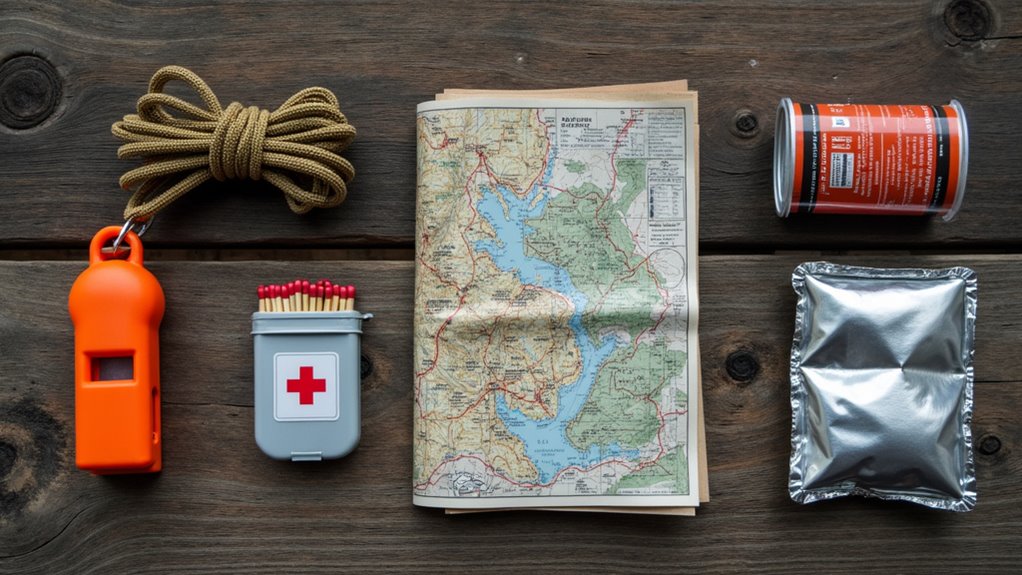
While you’re researching campground rules, you’ll also need to establish solid emergency protocols that could save your life in the wilderness. Create a detailed plan that includes emergency contact numbers, nearest hospital locations, and evacuation routes from your campsite.
Beyond knowing campground rules, develop comprehensive emergency protocols including contact numbers, hospital locations, and evacuation routes to ensure wilderness safety.
Share your itinerary with trusted contacts at home, including your exact location and expected return date.
Pack an all-encompassing first-aid kit and know how to use every item inside. Download offline maps since cell service often fails in remote areas.
Establish communication schedules with your emergency contacts – if you miss a check-in, they’ll know something’s wrong.
Practice basic wilderness survival skills before you leave. Know how to signal for help, purify water, and build emergency shelter using natural materials. If you’re planning more advanced outdoor activities like glacier climbing, additional specialized safety equipment and training become essential components of your emergency preparedness strategy.
Since every ounce matters when you’re hauling gear across uneven terrain, you’ll want to master the art of strategic packing before your trip. Smart packing isn’t just about fitting everything in—it’s about distributing weight properly and maximizing every cubic inch of space.
Essential Packing Strategies:
Test your packed weight at home first. Consider investing in unique travel backpacks that offer specialized compartments and innovative features designed specifically for outdoor adventures.
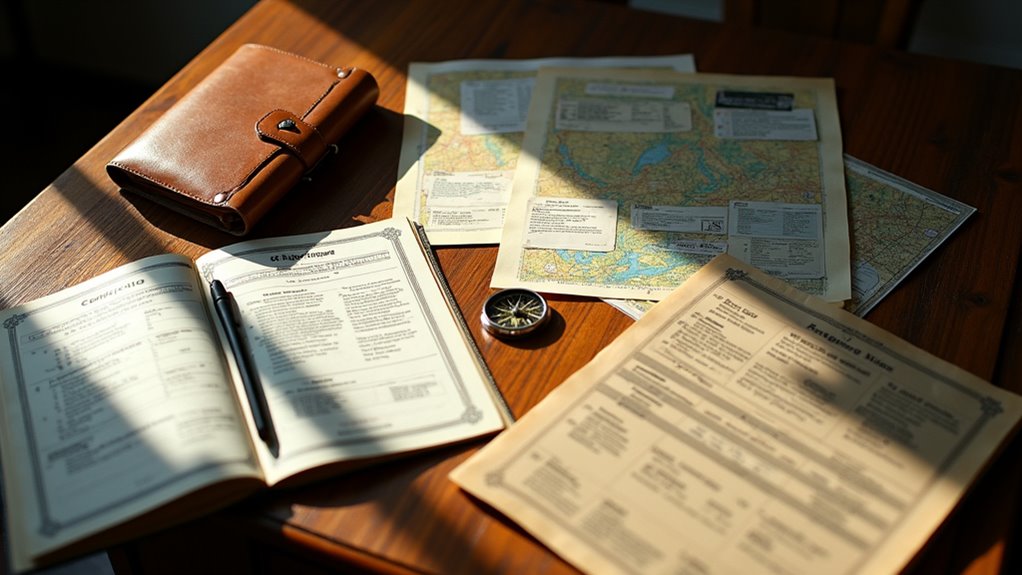
Beyond packing your physical gear efficiently, you’ll need to gather and protect the paperwork that grants you legal access to your camping destination. Start by securing your campsite reservations and permits well in advance. National parks often require timed entry passes, while backcountry areas need wilderness permits. Don’t forget fishing or hunting licenses if you’re planning those activities.
Create waterproof copies of essential documents: driver’s license, insurance cards, emergency contacts, and medical information. Store originals in a sealed plastic bag and keep copies separate from your main documents. Download offline maps and save reservation confirmations to your phone as backup.
Check permit requirements for specific activities like campfires, which may be restricted during dry seasons. Research local regulations beforehand to avoid disappointment or fines. Consider exploring unique geological formations along Missouri hiking trails that can enhance your outdoor adventure experience.
Before you hit the road, conduct a thorough inspection of your vehicle and all camping equipment to prevent breakdowns and forgotten essentials from ruining your trip. You’ll save yourself major headaches by catching problems before you’re miles from civilization.
Focus your inspection on these critical areas:
Don’t rush this process—methodical preparation prevents wilderness emergencies. Using a comprehensive camping gear checklist ensures you won’t overlook critical items during your pre-trip inspection.
You’ve done the groundwork—now you’re ready to hit the trail. Like a well-oiled machine, your preparation will keep everything running smoothly when you’re miles from civilization. Double-check your gear one last time, load up your vehicle, and head out with confidence. Remember, you can’t over-prepare for the wilderness, but you can definitely under-prepare. Trust your planning, stay flexible with changing conditions, and enjoy every moment of your adventure.